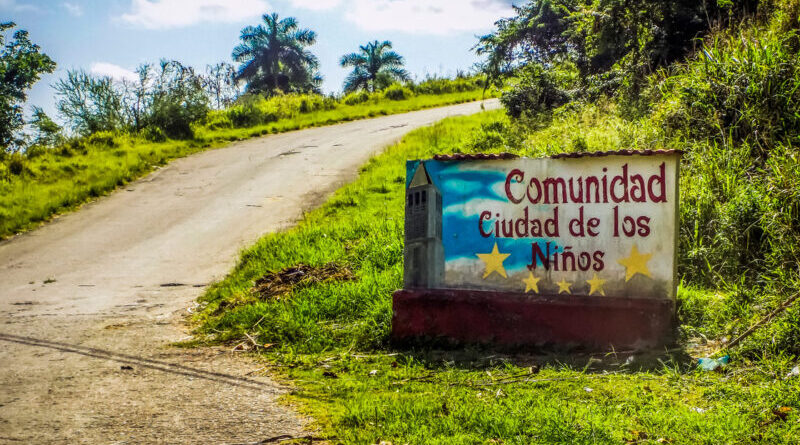A Story of Legacy and Abandonment in Bejucal, Cuba – Havana Times
and highlighting the work of Father Teste

Photo Feature by Idania Cárdenas
HAVANA TIMES – The City of Children was founded in the 1950s by the Catholic priest Ismael Teste, known as Father Teste, who served in Bejucal and Santiago de las Vegas. It was a social project aimed at sheltering and educating homeless children and youth, offering them religious education and training in trades as an alternative to incarceration.
The facility was built on top of a small hill near Bejucal, crowned by a tall tower covered in tiles, visible from several kilometers away. Located in the municipality of Bejucal (Mayabeque), the complex included administrative buildings, dormitories, classrooms, a swimming pool, carpentry workshops, a chapel, dining halls, and monuments to Christ and Martí, as well as a large Cuban flag on the hilltop.
The project received support from the entire community: from financial and material donations by citizens, merchants, and entrepreneurs to media coverage through television campaigns led by Father Teste himself.
In Bejucal households, people say the priest was very popular and frequently visited; he was often invited to lunch or snack at many homes. Another nostalgic comment laments how the project languished after the triumph of the Revolution in 1959, when religious institutions were shut down. The site was then repurposed for military uses including housing a military unit.
The municipality of Bejucal was founded in 1713, near Havana. Bejucal is famous for being the terminal of the first railroad in Cuba and Latin America, inaugurated in 1873. Popular culture counts among its greatest living traditions the Charangas, traditional festivals celebrated in Cuba alongside the Parrandas of Remedios and the Carnivals of Santiago.
The festival is marked by the rivalry between two groups: Ceiba de Plata (blue, symbolized by the scorpion) and Espina de Oro (red, symbolized by the rooster). Each presents beautifully illuminated floats with dancers accompanied by Bejucal’s traditional drums, all celebrated in the Juan Delgado town square.
Before the arrival of Europeans, the Bejucal area was inhabited by Mesolithic groups and hunter-gatherers, as evidenced by archaeological findings such as stone tools, shells, and human remains discovered in caves and open sites.
Several artists and intellectuals were born or lived in Bejucal, including the writer Felix Pita Rodriguez, the patriot Juan Delgado Gonzalez—whose figure is commemorated in the Central Plaza—and the bolero singer Nestor del Castillo.
Today, Bejucal shows signs of decline: deteriorated streets, colonial buildings at risk of collapse, abandoned houses, and an aging population. The City of Children stands as a symbol of the town’s local decay.
See more Havana Times photo features here.
Source – Indonesia News



